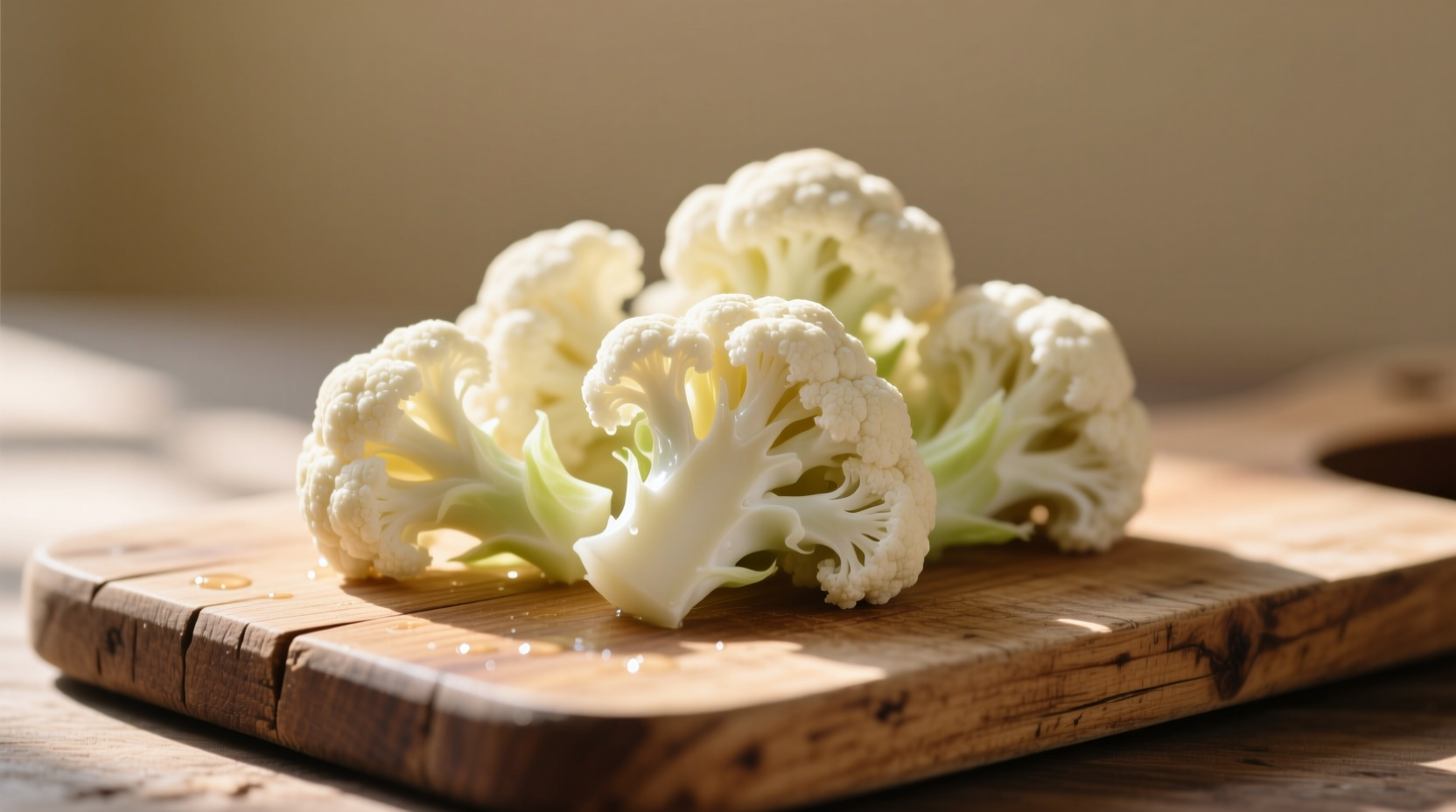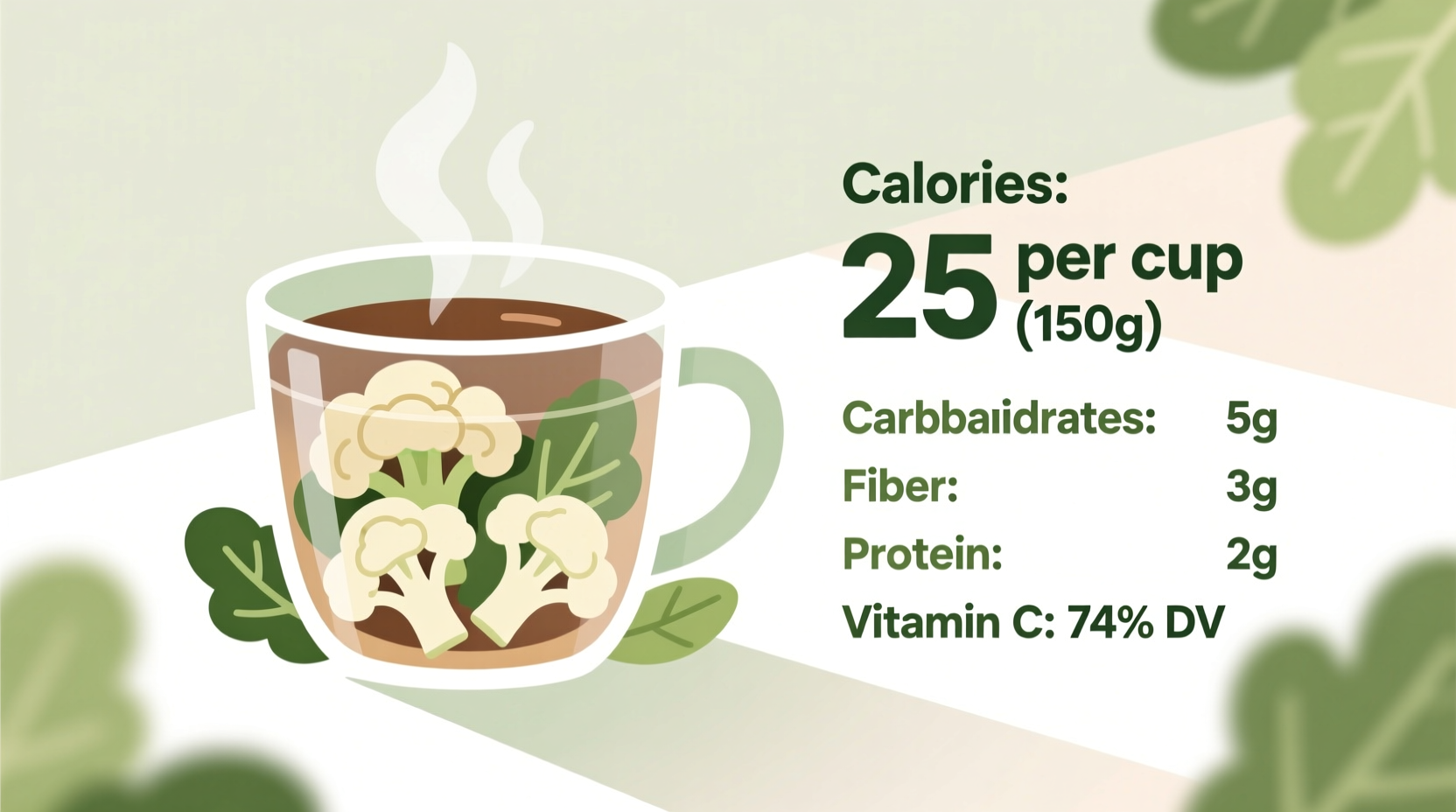Understanding the precise nutritional value of everyday foods is essential for making informed dietary choices. Cauliflower has surged in popularity as a versatile, low-calorie alternative to traditional starches, but many people remain uncertain about its exact nutritional profile.
Why Cauliflower Deserves a Place on Your Plate
Cauliflower isn't just low in calories—it's packed with essential nutrients that support overall health. This cruciferous vegetable provides significant amounts of vitamin C, vitamin K, and dietary fiber while maintaining an impressively low calorie count. Unlike many other vegetables that increase in calorie density when cooked, cauliflower maintains its favorable nutritional ratio whether consumed raw or prepared.
Breaking Down the Numbers: What's in a Cup?
The standard measurement for nutritional analysis is based on USDA specifications. When discussing "a cup" of cauliflower, it's important to understand what this actually represents in practical terms:
| Preparation Method | Volume | Weight | Calories | Carbohydrates |
|---|---|---|---|---|
| Raw, chopped | 1 cup | 100g | 25 kcal | 5g |
| Steamed | 1 cup | 128g | 29 kcal | 5.3g |
| Riced (raw) | 1 cup | 108g | 27 kcal | 5.1g |
| Riced (cooked) | 1 cup | 150g | 32 kcal | 6g |
This nutritional consistency across preparation methods makes cauliflower exceptionally valuable for meal planning. The slight increase in calories when cooked results from water absorption during the cooking process, not from added energy content.
How Cauliflower Compares to Common Alternatives
When evaluating vegetables for dietary planning, context matters. Consider how cauliflower stacks up against other popular options:
- White rice (1 cup cooked): Approximately 200 calories
- Potato (1 cup mashed): Around 230 calories
- Broccoli (1 cup raw): About 34 calories
- Spinach (1 cup raw): Only 7 calories
What makes cauliflower particularly valuable is its versatility—it can mimic higher-calorie foods while providing similar texture and satisfaction with dramatically fewer calories. This "calorie displacement" capability explains its popularity in low-carb and weight management diets.

Practical Applications for Daily Nutrition
Knowing the calorie content is just the beginning. Understanding how to incorporate this information into real-world eating habits delivers the most value:
Meal Planning Made Simple
For those tracking daily intake, cauliflower offers remarkable flexibility. A full cup provides only 25 calories—less than 2% of a standard 2,000-calorie daily diet. This means you can enjoy generous portions without significantly impacting your calorie budget.
Diet-Specific Considerations
Cauliflower fits seamlessly into various dietary approaches:
- Keto diets: With only 5g of carbohydrates per cup, it's an excellent low-carb option
- Weight loss plans: Its high water and fiber content promotes satiety
- Diabetes management: Low glycemic impact makes it diabetes-friendly
- General healthy eating: Rich in antioxidants and phytonutrients
Scientific Verification of Nutritional Data
The nutritional values presented here come from the USDA FoodData Central database, the gold standard for food composition information. Researchers at the Agricultural Research Service conduct rigorous laboratory analyses to determine precise nutrient profiles for foods.
What many people don't realize is that vegetable nutrient content can vary based on growing conditions, harvest time, and storage methods. The USDA values represent averages from multiple samples analyzed under controlled conditions. For the most accurate tracking, weighing your cauliflower portions provides slightly more precision than measuring by volume.
Maximizing Nutritional Benefits
To get the most from your cauliflower while maintaining its low-calorie profile:
- Steam rather than boil to preserve water-soluble vitamins
- Pair with healthy fats like olive oil to enhance absorption of fat-soluble vitamins
- Don't overcook—lightly cooked or raw cauliflower retains more nutrients
- Use the entire plant including stems and leaves for maximum nutrient diversity
Contrary to popular belief, frozen cauliflower maintains comparable nutritional value to fresh when properly processed. This makes it a convenient, year-round option for maintaining consistent dietary habits.
Common Questions About Cauliflower Nutrition
Many people have follow-up questions after learning about cauliflower's calorie content. Here are answers to the most frequent inquiries:











 浙公网安备
33010002000092号
浙公网安备
33010002000092号 浙B2-20120091-4
浙B2-20120091-4